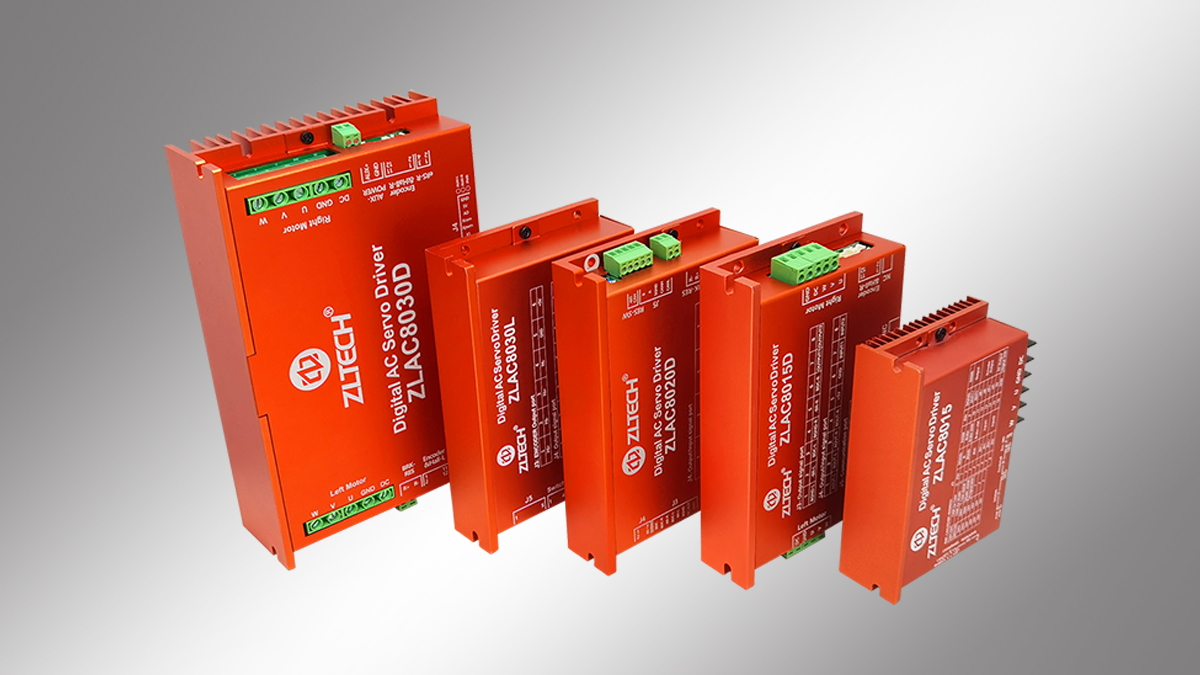The control mode of servo driver is the core part of the servo system, which determines the motion characteristics and performance of servo motor. The selection of servo driver control mode is of great significance for the performance and stability of the entire system in fields such as industrial automation, robotics technology, and CNC machine tools. Below, we will provide a detailed introduction to several types of servo driver control modes, as well as their advantages and disadvantages.
1.Speed control mode
Advantage:
- Easy to use: Users only need to set a target speed value, and the servo drived can control the motor speed.
- Fast response speed: it could quickly respond to user speed commands and achieve rapid acceleration and deceleration.
Disadvantage:
- Low accuracy: it mainly relies on motor speed feedback, there are errors.
- Suitable for situations that require constant speed operation, such as conveyor belts, winding machines, etc
2.Position control mode
Advantage:
- High precision: relies on encoder feedback signals to achieve precise position control.
- Suitable for occasions that require precise control of mechanical position, such as CNC machine tools, robots, etc.
Disadvantage:
- Slow response speed: The control algorithm is complex and requires a large amount of computation.
- Complex implementation: Multiple factors need to be considered, such as acceleration, deceleration, load, etc.
3.Torque control mode
Advantage:
- Accurate torque control: Users set the desired torque value, and the driver controls the motor speed and current to achieve precise control.
- Suitable for applications that require precise torque control, such as press machines, injection molding machines, etc.
Disadvantage:
- Suitable for applications that require precise torque control, such as press machines, injection molding machines, etc.
- The control algorithm is complex and requires a large amount of computation.
4.Voltage control mode
Advantage:
- Simple structure and low cost.
Disadvantage:
- Low control accuracy, suitable for situations where high control accuracy is not required.
5.Current control mode
Advantage:
- High control accuracy and good stability.
- Suitable for applications that require high control accuracy, such as CNC machine tools, robots, etc.
Disadvantage:
- Complex implementation requires precise measurement and adjustment of current.
6.Incremental control
Advantage:
- Complex implementation requires precise measurement and adjustment of current.
Disadvantage:
- Possible hysteresis and overshoot may occur, requiring appropriate adjustment of control parameters.
Suggestion:
Choosing the appropriate control mode depends on specific application requirements and system performance. If high precision is required for position and speed, and the upper controller has good closed-loop control function, speed control mode or position control mode is a better choice. If precise torque control is needed, torque control mode is more suitable. On controllers with slower computing speed, position control mode may be more suitable, while on controllers with faster computing speed, speed control mode or torque control mode can be considered, and the position loop or speed loop can be moved to the upper controller to improve system efficiency.
Shenzhen Zhongling Technology (www.robotmotor. com) focuses on the research and development, production, and sales of wheel hub motors and drivers, and has also been verified by customers, achieving good results.
Post time: Nov-20-2024

